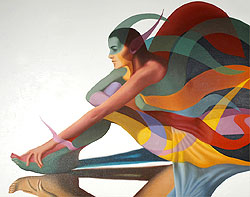
Betsey Makes Us Smile :Betsey Johnson’s return to the runway, after two years, was well worth the wait. The show opened with model thin, Kelly Osbourne, who strutted down a hay scattered runway with two bright green toy guns in hand; can you say Wild Wild West. Johnson’s inspiration this season was 45 years worth of her own archives. "I’m working on my stuff, being very true-blue Betsey," she said. The final look at the show was a dedication to the late designer Alexander McQueen. A model, adorned with enlarged red wax lips walked down the runway with a small bouquet of red roses and a sign that said, "LONG LIVE MCQUEEN!"

Buy Straight Off the Runway: Proenza Schouler designer’s Jack McCollough and Lazaro Hernandez are exclusively selling their runway bags on their website, proenzaschouler.com, 24 hours after their F/W 2010 collection on Wednesday, Feb 17 at Milk Studios. Online shoppers can preorder the fall handbags straight from the runway through the recently introduced e-commerce on the site.
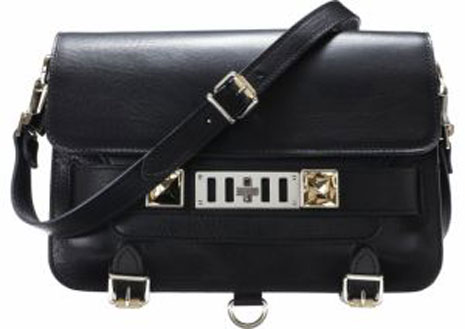
Unisex Clothing: Androgyny was the theme for Rad Hourani’s F/W 2010 collection. The show included both the male and female models dressed in tights, high heels, bike shorts, and layers of black. The coats had multiple compartments and zippers, so one piece could transform into several different shapes. "Unisex is my main focus," Hourani told NY Times. "All my pieces are unisex so you can wear it feminine, masculine, a guy can wear it, a girl can wear it, at any age, anytime, anywhere…I don’t like to put limits to gender," the Canadian-born designer explained. "I think everybody is feminine, and everybody is born unisex."
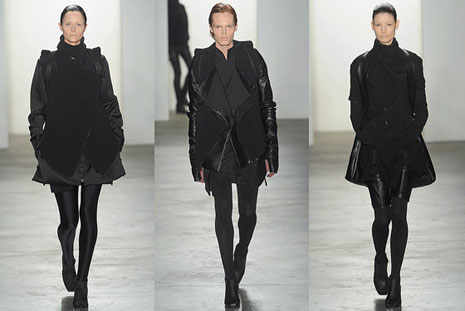
Keeping Your Hands Warm: Gloves are perhaps one of the must-have accessories this season, so choosing the right pair can make all the difference. They commanded lots of attention on the runways, each uniquely designed, with new variations of textures, fabrics, and colors. Donna Karan’s long pair featured flower-shape cutouts that created a lacy-leather effect. Chris Benz designed eye-catching lime-green furry mitts. And Carolina Herrera’s just below the elbow gloves wove apple-red patent leather and suede together.

A Return to Elegance: Carolina Herrera, one of the most elegantly dressed designers in fashion, delivered a charming and glamorous collection fit for a lady. The clothes were an outright presentation of pure luxury, with fur trim, voluminous sleeves, and wide-leg silk pants. She impressed the critics right down to Cathy Horyn of the New York Times who wrote she “seemed to put more of herself into the clothes,” including a dress printed in tiny reproductions of a family photo. WWD added, “The embrace of opulence felt oddly comforting.” Everyone seemed to appreciate the designer’s return to elegance.

Feeling the Cut Backs: After throwing one of the most lavish runway shows last season adorned with five grand pianos lining the runway, Zac Posen cuts back substantially for his latest collection. As recession woes hit designers, especially small companies like Posen, it’s sad to see how they have to hold back creatively. The collection was far removed from Posen’s usual obsession with ball skirts and gowns, but in their absence, he focused on sportswear for the season. The collection was a combination of pantsuits with a forties flair, luxe coats to brightly colored separates, stacked Plexiglas bangles and pom pom peppered shoes, which all worked together to deliver something cohesive and vibrant. Keeping his core customer in mind, Posen maintained high and sexy hemlines, yet provided something for the conservative set in straight-legged satin pants and mandarin collar jackets.
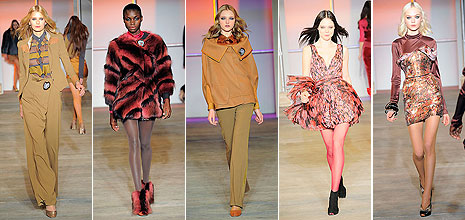
The Devil Really Does Wear Prada: Former Vogue cover girl, Paulina Porizkova, seeks revenge in a Huffington Post blog after she gets snubbed by Anna Wintour in the ladies’ room at a recent AmFAR benefit. Porizkova writes: "I walked in and almost straight into Anna Wintour.’Hi, Anna,’ I said brightly to Anna’s mirror reflection. Her large eyes in her large head flickered. And with the slightest nod, one that may have been a twitch, she left me standing at the sinks. I admit I felt a bit more than slighted, I was after all, on quite a few covers of her magazine, and the glance she gave me is one I’d give to an expired carton of milk. I am aware my expiration date (as a model) is long past, but a slight acknowledgment that I wasn’t the bathroom attendant would have been nice."
Jacobs Pleases the Crowd: To start the F/W 2010 show, Marc Jacobs and Robert Duffy appeared on opposite corners and ripped away brown paper covering a simple wood stage at the end of the runway, revealing a tableau of 56 models elegantly dressed in a palette of soft neutral colors, pale pastels and demure shapes. Heightened by Frederic Sanchez’s soundtrack, covers of “Over the Rainbow” blared out the speakers as the first girl took to the runway in a gray sweatshirt with a crisscrossed back, tweedy gray culottes and ankle socks. To those familiar with the designer’s early work, it all seemed to be a case of déjà vu. The collection was 180 degrees removed from last fall’s wild Eighties theme but the design process remained constant. “Everything is a celebration of something, whether it’s beige or Day-Glo yellow,” Jacobs said. “It doesn’t have to be a thing. You can make a thing out of anything you’re passionate about.”
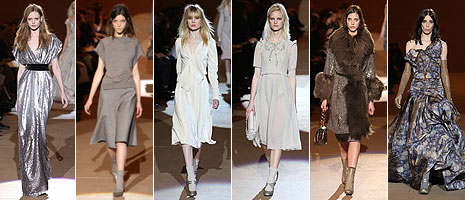
Victoria Beckham Charms Them: In an intimate presentation for about 20-30 people, at the grand Upper East Side room, Victoria Beckham had quite a posh affair. With an audience that included Carine Roitfeld, Nina Garcia and Karl Lagerfeld, you have a room filled with fashions most respected. Victoria Beckham’s Dick Tracy-inspired fall collection charmed the critics, not to mention her personal greetings and look-by-look narration. British Vogue called it “a very beautiful collection that evolved her body con aesthetic,” and Style.com declared that “there wasn’t one bad dress in the bunch.” Most critics noted the evolution of Beckham’s designs, admiring a “newfound focus on draping and fluidly.”
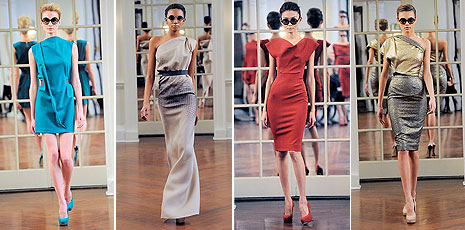


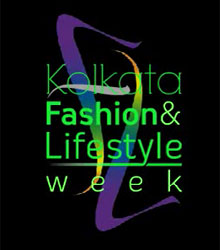 The Kolkata Fashion & Lifestyle Week in its all new avatar commences from the February 24th, 2010. This fashion week is being spearheaded by Yudhajit Dutta the dynamic Managing director of Purple People Entertainment. After the split with the Kolkata Fashion Week it has come forward as a very promising event for the city with renowned designers like Narendra Kumar, JJ Valaya, Satya Paul, Zubair Kirmani, Samant Chauhan showcasing here.
The Kolkata Fashion & Lifestyle Week in its all new avatar commences from the February 24th, 2010. This fashion week is being spearheaded by Yudhajit Dutta the dynamic Managing director of Purple People Entertainment. After the split with the Kolkata Fashion Week it has come forward as a very promising event for the city with renowned designers like Narendra Kumar, JJ Valaya, Satya Paul, Zubair Kirmani, Samant Chauhan showcasing here.
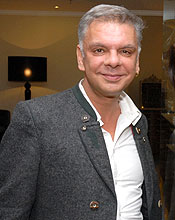 The Indo-French designers have united not only the East and the West but also the past to the future. Their early years were spent in Paris at an Haute Coutre House, a field where garments are unique pieces of art, handmade to perfection abiding the principles of a secular manufacturing tradition. They later moved to India where they continue to work with an identical approach, but at a Hi-tech industrial level. Their new headquarters thus unite the concept of an atelier or traditional workroom with ultra modern cutting edge technology, a challenge to create a unique product.
The Indo-French designers have united not only the East and the West but also the past to the future. Their early years were spent in Paris at an Haute Coutre House, a field where garments are unique pieces of art, handmade to perfection abiding the principles of a secular manufacturing tradition. They later moved to India where they continue to work with an identical approach, but at a Hi-tech industrial level. Their new headquarters thus unite the concept of an atelier or traditional workroom with ultra modern cutting edge technology, a challenge to create a unique product. 
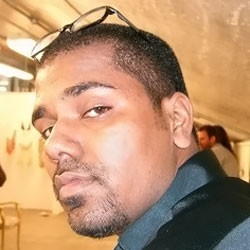 Akaaro is the first alphabet in Sanskrit and aptly resonates for a brand or design philosophy that is rooted and yet contemporary and directional. Akaaro was launched at the prestigious ORIGIN: The London Craft fair in 2007 and has been a regular since then. The designer behind the label is Gaurav Gupta who creates and weaves hand woven garments and accessories through Akaaro. He has his studio based in Delhi and showcases internationally and is known for his innovative textile with engineered and cutting edge designs. Gaurav is trained at Chelsea College of Art and Design London in Woven Textiles and National Institute of Fashion Technology Delhi in Fashion and Graphics. And it was here that the seeds of Akaaro first sprouted in him. When still in college he was regular at the London Craft Fair and had always dreamt of launching his label from that very platform. And thus his dream came true when in 2007 his application was selected.
Akaaro is the first alphabet in Sanskrit and aptly resonates for a brand or design philosophy that is rooted and yet contemporary and directional. Akaaro was launched at the prestigious ORIGIN: The London Craft fair in 2007 and has been a regular since then. The designer behind the label is Gaurav Gupta who creates and weaves hand woven garments and accessories through Akaaro. He has his studio based in Delhi and showcases internationally and is known for his innovative textile with engineered and cutting edge designs. Gaurav is trained at Chelsea College of Art and Design London in Woven Textiles and National Institute of Fashion Technology Delhi in Fashion and Graphics. And it was here that the seeds of Akaaro first sprouted in him. When still in college he was regular at the London Craft Fair and had always dreamt of launching his label from that very platform. And thus his dream came true when in 2007 his application was selected. 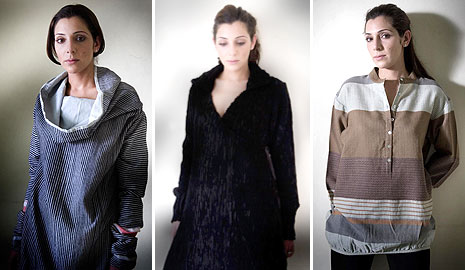
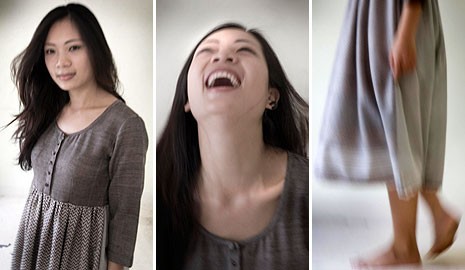

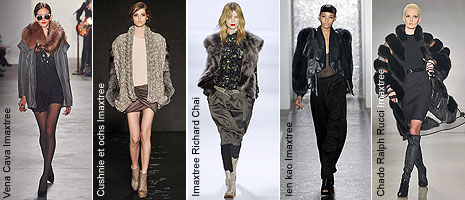
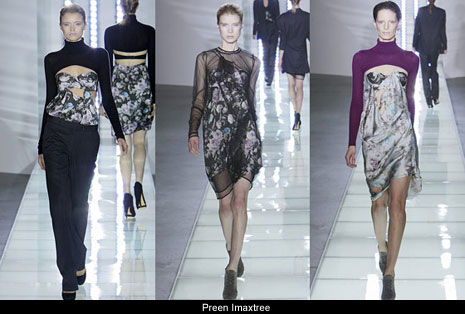
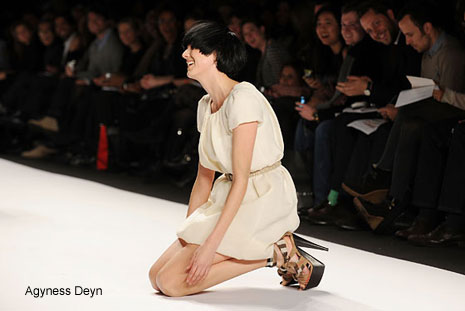

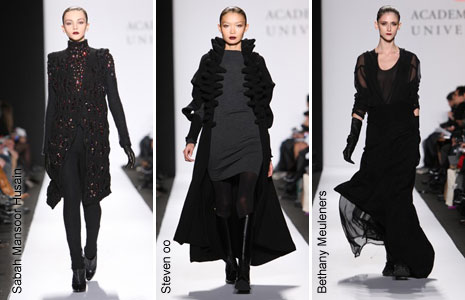
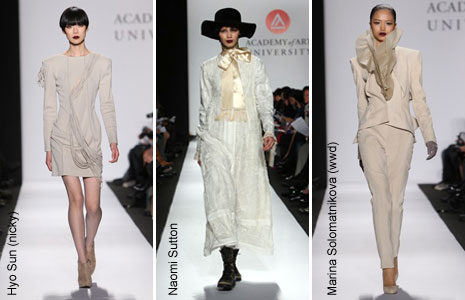
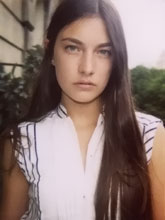 Jason Wu Splits the Vote: Jason Wu’s F/W 2010 certainly made an impact. So much so that it split even the most notable of fashion critics. Times fashion critic Cathy Horyn: "Jason Wu’s homage to the photographs of Irving Penn just didn’t work. The draping of evening dresses — full-skirted deb numbers, trapezes and so forth — was clunky and labored, and one strapless silk dress had a huge swell of fabric on the model’s arm, as if a muff had crawled up her elbow.” Most appreciated was the menswear inspired outerwear, The Wall Street Journal declared his paint-splatter coats “iconic for the season.” But it was the eveningwear that left most divided. Though it praised a feathered tulle dress, Style.com concluded that “it didn’t work” and that some of the dresses lacked the "effervescent quality" of Wu’s best work. WWD agreed that the looks were split: some “charming in their girlish awkwardness and others, just awkward.”
Jason Wu Splits the Vote: Jason Wu’s F/W 2010 certainly made an impact. So much so that it split even the most notable of fashion critics. Times fashion critic Cathy Horyn: "Jason Wu’s homage to the photographs of Irving Penn just didn’t work. The draping of evening dresses — full-skirted deb numbers, trapezes and so forth — was clunky and labored, and one strapless silk dress had a huge swell of fabric on the model’s arm, as if a muff had crawled up her elbow.” Most appreciated was the menswear inspired outerwear, The Wall Street Journal declared his paint-splatter coats “iconic for the season.” But it was the eveningwear that left most divided. Though it praised a feathered tulle dress, Style.com concluded that “it didn’t work” and that some of the dresses lacked the "effervescent quality" of Wu’s best work. WWD agreed that the looks were split: some “charming in their girlish awkwardness and others, just awkward.” 
 American fashion designer, Marc Jacobs, has a flair for making headlines, whether it’s about his trend-setting collections, his bizarre costume parties or his personal life. You’ve probably guessed already, Jacobs makes headlines again after the designer announced to broadcast his F/W 2010 collection online.
American fashion designer, Marc Jacobs, has a flair for making headlines, whether it’s about his trend-setting collections, his bizarre costume parties or his personal life. You’ve probably guessed already, Jacobs makes headlines again after the designer announced to broadcast his F/W 2010 collection online.
 Sabah Mansoor Husain, of Bangalore, India, entered the Academy of Art University for her MFA degree in Fashion and Knitwear Design, after receiving her BA degree in Textile Design from Bangalore’s Srishti School of Art Design and Technology in 2005.
Sabah Mansoor Husain, of Bangalore, India, entered the Academy of Art University for her MFA degree in Fashion and Knitwear Design, after receiving her BA degree in Textile Design from Bangalore’s Srishti School of Art Design and Technology in 2005.
 Inspired by chandeliers, Sabah worked with an artisan in Firozabad, India to customize the jewel-shap
Inspired by chandeliers, Sabah worked with an artisan in Firozabad, India to customize the jewel-shap ed crystals and faceted glass beads she used to embellish to her entirely black and charcoal collection.
ed crystals and faceted glass beads she used to embellish to her entirely black and charcoal collection.


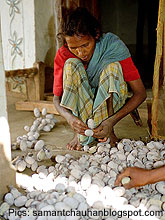 Sustainable fashion that propagates awareness towards the disturbed ecosystem strives to awaken the most laid back, non reactive fashion society. Sustainability is a relative term which can also be interpreted as to live and let live. Fashionfad.in sits together with the proactive Ahimsa Silk Designer Samant Chauhan and an anthropologist Phyllida Jay, working for a research project on sustainable fashion and more precisely organic cotton in India, to unravel the true essence of sustainability in fashion.
Sustainable fashion that propagates awareness towards the disturbed ecosystem strives to awaken the most laid back, non reactive fashion society. Sustainability is a relative term which can also be interpreted as to live and let live. Fashionfad.in sits together with the proactive Ahimsa Silk Designer Samant Chauhan and an anthropologist Phyllida Jay, working for a research project on sustainable fashion and more precisely organic cotton in India, to unravel the true essence of sustainability in fashion. 
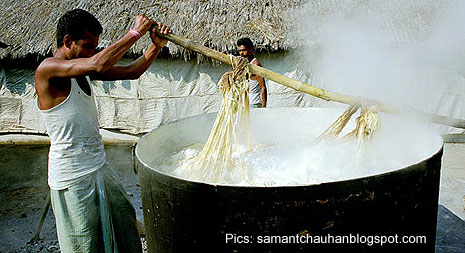

 The Bangalore Fashion Week starting today strikes another cord in the Indian fashion scene with its second edition of the event. The rising fashion quotient in the country has certainly raised the demand for more fashion worthy consumers as well as designers and the already existing platforms for showcasing has become little stringent for the growing industry.
The Bangalore Fashion Week starting today strikes another cord in the Indian fashion scene with its second edition of the event. The rising fashion quotient in the country has certainly raised the demand for more fashion worthy consumers as well as designers and the already existing platforms for showcasing has become little stringent for the growing industry.
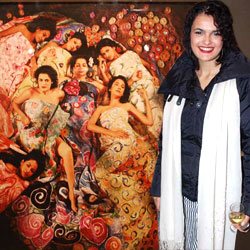 Blanca Dixit Peralta uses multi layers of acrylic and oil on canvas to create figures that are real yet abstract ordinary and yet surreal, an experience enough to ignite a passion that is beyond one’s causal existence. The stunningly glamorous artist who heirs her beauty from her Indian mother and Spanish father is a trained dancer in Salsa, Tango, Jazz and Flamingo as well.
Blanca Dixit Peralta uses multi layers of acrylic and oil on canvas to create figures that are real yet abstract ordinary and yet surreal, an experience enough to ignite a passion that is beyond one’s causal existence. The stunningly glamorous artist who heirs her beauty from her Indian mother and Spanish father is a trained dancer in Salsa, Tango, Jazz and Flamingo as well.
 With a Personality and style like yours you can easily be mistaken for a model, would you like to become a model as well?
With a Personality and style like yours you can easily be mistaken for a model, would you like to become a model as well?